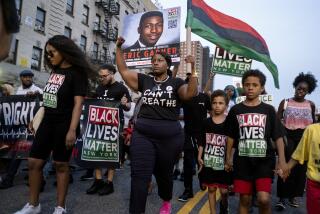Make the World Safer; Take a Nap : Study Led by Scripps Researcher Finds Link Between Drowsiness, Disasters
- Share via
A blue-ribbon scientific panel headed by a researcher at Scripps Clinic and Research Foundation has found an alarming link between the brain’s sleep processes and such disasters as Chernobyl and the Challenger explosion.
While the panel did not find a cause-and-effect relationship between drowsiness and disaster, it concluded that “it appears to be more than coincidental” that four major nuclear accidents occurred in the post-midnight hours.
Last-minute decisions on the launch of the space shuttle Challenger were also made before sunrise.
A disproportionate number of other destructive human errors also occurred during the same two periods of the day when the brain has a physiological tendency to fall asleep, the panel concluded.
The panel--the Assn. of Professional Sleep Societies’ Committee on Catastrophes, Sleep and Public Policy--recommended stricter government regulations and labor management policies on the issues of sleeplessness and fatigue.
The findings were published today in Sleep, a journal of several international sleep societies.
“We felt as a committee that we did not want to cry wolf, but we did want to suggest that the body has its limits,” said committee chairman Dr. Merrill Mitler, scientific director of the Scripps Clinic Sleep Disorders Center.
“Society has got to be aware of the body’s natural processes,” Mitler said in an interview from his La Jolla office. “In the old days, falling asleep could mean a bent fender. Now, with the world so complex and interdependent, the risks are just too great.”
Mitler noted that the human errors that led to nuclear accidents at Three Mile Island in Pennsylvania, Chernobyl in the Soviet Union, Rancho Seco in California and Oak Harbor in Ohio all occurred between 1 a.m. and 4 a.m.
“These reactors are meant to run by themselves, and the employees are meant at that hour simply to be ready to respond to problems,” Mitler said. “Still, we found that errors occurred. The body, even for people who routinely work that kind of shift, is just not at its peak responsiveness.”
Much of modern life, with its emphasis on efficiency and 24-hour operation, “is basically asking too much of the human body,” he said.
The report notes that the brain processes controlling alertness result in an increased tendency to sleep between 2 a.m. and 7 a.m. and between 2 p.m. and 5 p.m., the “post-lunch dip.” These tendencies are present even if a person has slept normally.
Disease-related deaths and fatigue-related auto accidents rise during the same periods, according to the report.
The committee, which met periodically over two years, included scientists from Scripps Clinic and Research Foundation; the National Aeronautics and Space Administration; Brown, Harvard, and Stanford universities, and the University of Pennsylvania.
“Some industries that profit by pushing their workers hard deny there’s a problem--they think that if the pay is high enough and management strong enough, they will have alert workers,” Mitler said. “We’ve shown that that’s dangerous thinking.”
The committee recommended that government, management and organized labor:
- Be more aware of the “zones of vulnerability” and consider sleep physiology when designing workloads and schedules.
- Limit active-duty hours both for equipment operators and decision-makers.
- Promote educational programs for workers to encourage sound sleep practices.
- Develop programs to identify signs of sleep-related errors on the job and in vehicle operation, particularly among haulers of hazardous materials.
“That sleep is associated with dangers and death is nothing new,” Mitler said. “The Bible has numerous references to that relationship. What is new is the increased risk to the public at large from sleep deprivation and the body’s natural tendency to let down its defenses at certain times.”




